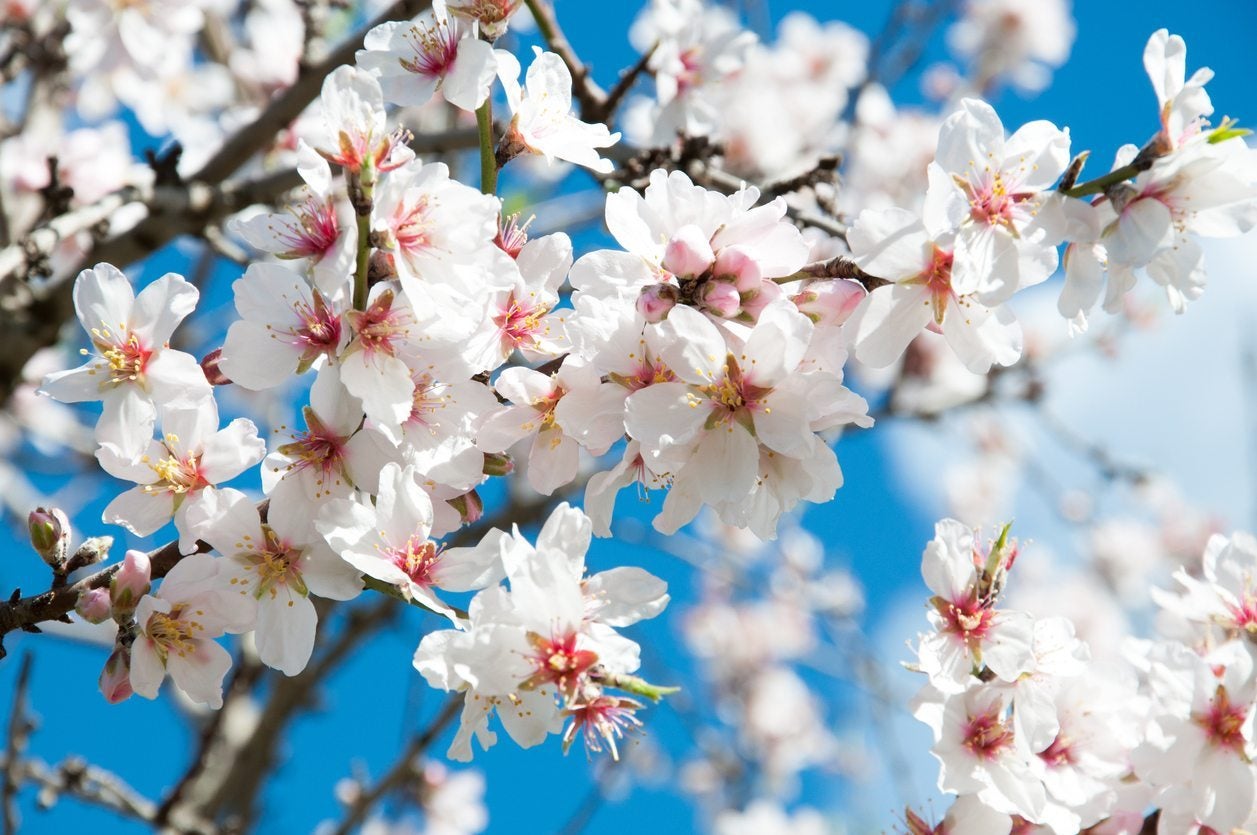
Almond trees are wonderful assets to have in the garden or orchard. Store bought nuts don’t come cheap, and having your own personal tree is a fantastic way to always have almonds on hand without breaking the bank. What do you do if your beloved tree isn’t flowering, let alone producing nuts? Keep reading to learn more about what to do when your almond tree won’t bloom.
Reasons for an Almond Tree Not Blooming
There are a few possible causes for no flowers on almond trees. One very simple one is that your tree is having an off year. If you experienced a bumper crop last year, this means your tree put more energy into producing fruit than setting new buds. This is perfectly natural and fine, and it shouldn’t be a problem next year.
Another common reason is improper pruning. Almonds bloom on the previous year’s growth. This means that almonds benefit from pruning just after they’re finished blooming, when the new growth hasn’t set buds yet. If you prune your almond tree in fall, winter, or early spring, there’s a good chance you’ll be removing flower buds that have already formed, and you’ll see fewer blossoms in the spring.
It’s possible that an almond tree won’t bloom because of disease. Both fire blight and blossom blight are diseases that result in blossom death, so you’ll have no almond blossoms should either of these be affecting your tree. The flowers will form, but will then brown, wilt, and die. These diseases can be controlled by removal of infected areas and, in the case of blossom wilt, the application of wettable sulfur.
If you have an almond tree not flowering, a lack of water could be to blame. Almonds take a huge amount of water to thrive. If your tree hasn’t received enough water (a common problem, especially in California), it will put more energy into searching for water than flower or fruit production.
Almond trees are wonderful assets to have in the garden or orchard. Store bought nuts don’t come cheap, and having your own personal tree is a fantastic way to always have almonds on hand without breaking the bank. What do you do if your beloved tree isn’t flowering, let alone producing nuts? Keep reading to learn more about what to do when your almond tree won’t bloom.
Reasons for an Almond Tree Not Blooming
There are a few possible causes for no flowers on almond trees. One very simple one is that your tree is having an off year. If you experienced a bumper crop last year, this means your tree put more energy into producing fruit than setting new buds. This is perfectly natural and fine, and it shouldn’t be a problem next year.
Another common reason is improper pruning. Almonds bloom on the previous year’s growth. This means that almonds benefit from pruning just after they’re finished blooming, when the new growth hasn’t set buds yet. If you prune your almond tree in fall, winter, or early spring, there’s a good chance you’ll be removing flower buds that have already formed, and you’ll see fewer blossoms in the spring.
It’s possible that an almond tree won’t bloom because of disease. Both fire blight and blossom blight are diseases that result in blossom death, so you’ll have no almond blossoms should either of these be affecting your tree. The flowers will form, but will then brown, wilt, and die. These diseases can be controlled by removal of infected areas and, in the case of blossom wilt, the application of wettable sulfur.
If you have an almond tree not flowering, a lack of water could be to blame. Almonds take a huge amount of water to thrive. If your tree hasn’t received enough water (a common problem, especially in California), it will put more energy into searching for water than flower or fruit production.
